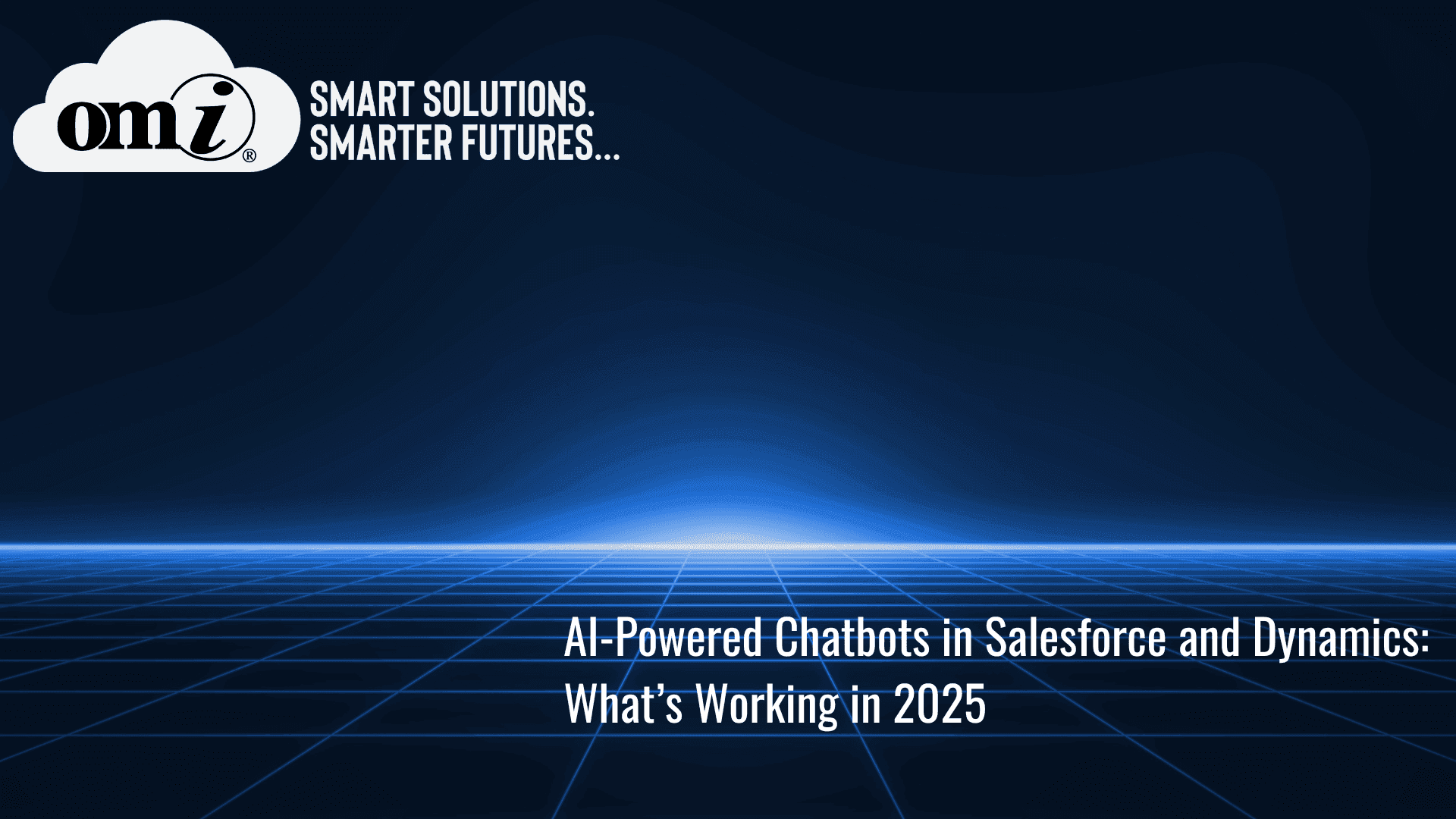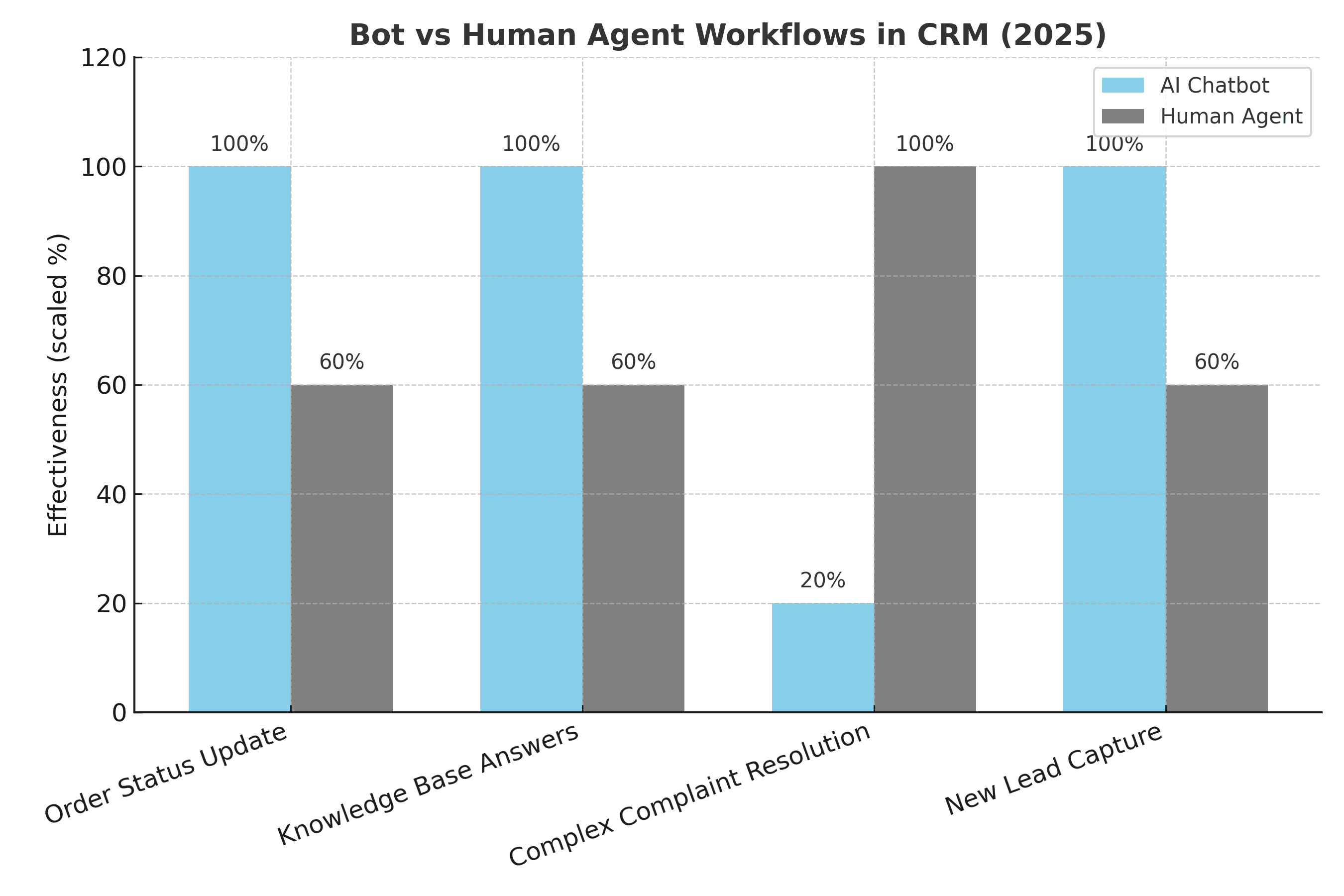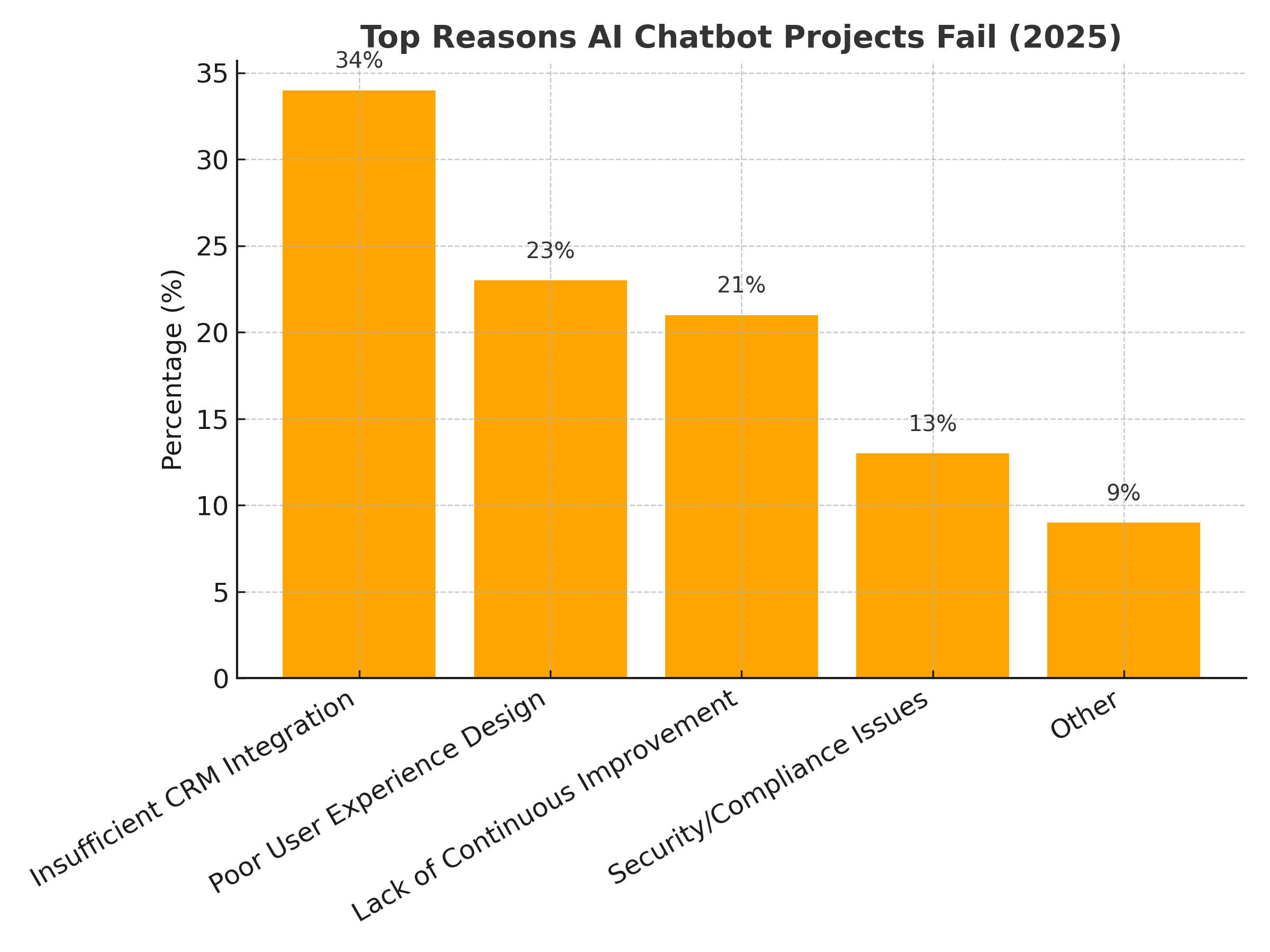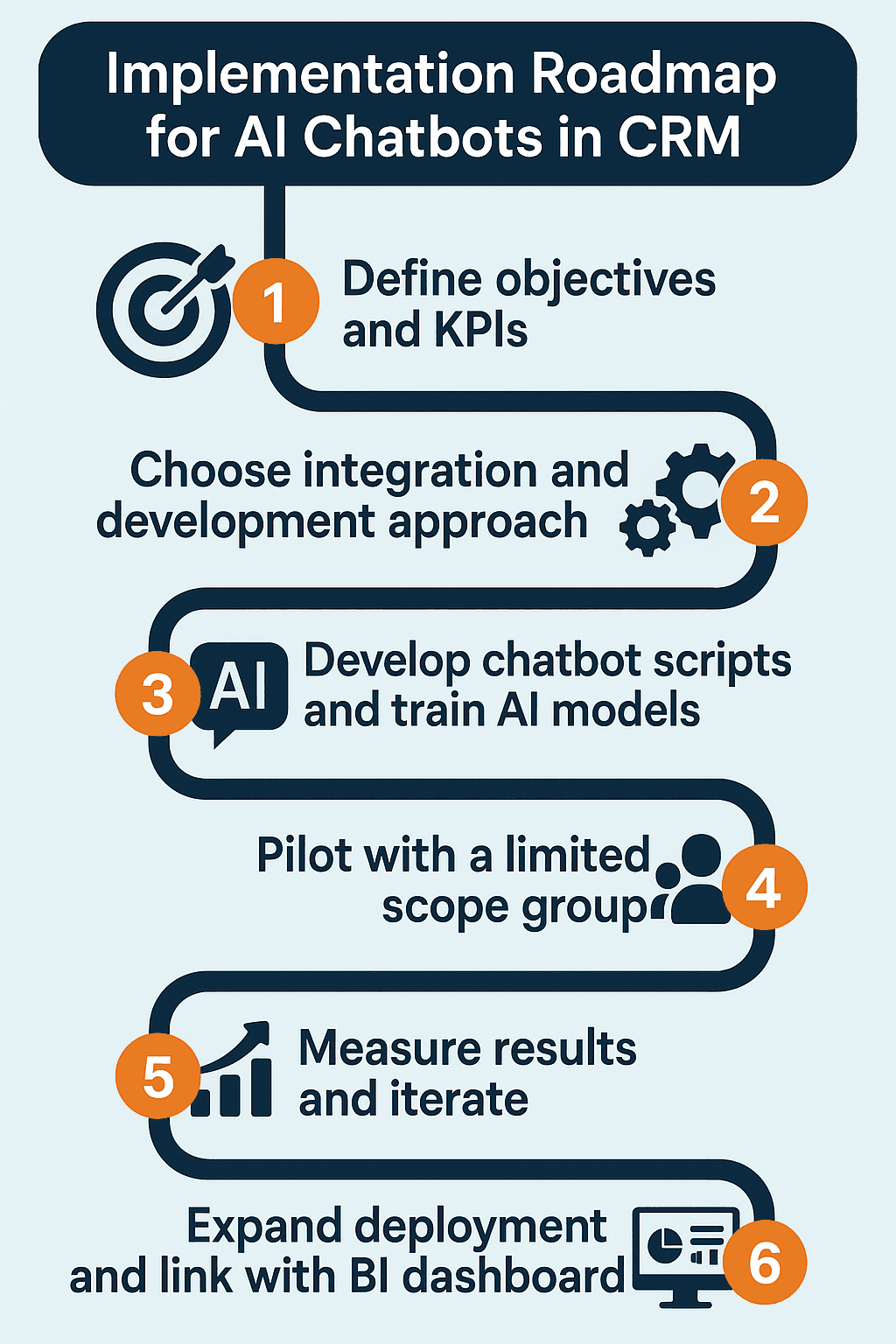AI-Powered Chatbots in Salesforce and Dynamics: What’s Working in 2025
October 06
CRM Configuration
Blog

AI-powered chatbots have rapidly evolved from simple customer support tools into integral components of Customer Relationship Management (CRM) systems. Over the past few years, we’ve seen substantial advances in how artificial intelligence is leveraged in platforms like Salesforce and Microsoft Dynamics, especially with the goal of improving customer engagement, automating routine workflows, and deepening data-driven insights. In 2025, these chatbots are no longer just a novelty, when correctly implemented and managed, they have become strategic assets that drive substantial ROI. For administrators, IT leaders, and CRM consultants, understanding what's working (and what isn't) with today’s chatbot landscape is vital for shaping successful digital transformation projects.
Why Chatbots Matter More Than Ever in 2025
Customers expect instant, personalized, and omnichannel responses. Traditional support channels often fall short, putting pressure on organizations to rethink their digital engagement approach. Modern AI-powered chatbots embedded in Salesforce and Dynamics meet this challenge, addressing key issues such as:
- Scalability: Handling thousands of queries simultaneously with consistent accuracy.
- 24/7 Availability: Ensuring around-the-clock support without ballooning costs.
- Personalization: Using CRM data to provide relevant, contextual responses tailored to each customer.
- Business Intelligence: Gathering and surfacing conversation data for ongoing process improvement.
But what’s really working for Salesforce and Dynamics environments in 2025? Let’s take a closer look at the trends, strategies, and implementation tactics that are making a difference.
What’s Working: The New Standard for AI Chatbots in CRM
1. Intelligent Integration with CRM Core Data
The most effective AI chatbots in Salesforce and Dynamics go beyond simple FAQ automation, they connect deeply with CRM objects such as leads, cases, and opportunities. This means bots can instantly:
- Update contact or opportunity records based on conversation data
- Trigger workflow automations such as scheduling callbacks or assigning cases
- Provide agents with real-time context for ongoing conversations
For example, a customer inquiring about a delayed order can receive order status, shipment updates, and be offered escalation paths, all based on real-time CRM data without human intervention. This deep integration is fundamental to improving both internal efficiency and customer satisfaction.
2. Omnichannel Presence and Seamless Handoffs
True customer-centricity in 2025 means chatbots are present wherever customers are: on websites, mobile apps, messaging platforms, or even voice interfaces. The latest AI solutions for Salesforce and Dynamics offer:
- Channel Flexibility: Supporting interactions across WhatsApp, SMS, live chat, and more.
- Seamless Agent Handoffs: When the bot encounters a complex issue, it smoothly transfers the conversation to a live agent, bringing along full context from the interaction.
This approach is vital for maintaining both high efficiency and a human touch at critical moments.

3. Robust Data Security and Compliance Features
Increased data privacy regulations and customer awareness make security a top priority. The best Salesforce and Dynamics chatbot implementations now offer:
- Granular permissions, restricting bot access to sensitive fields
- Comprehensive audit logs of all bot interactions
- End-to-end encryption for sensitive customer data exchanges
Organizations must work with implementation partners who deeply understand both CRM and security frameworks to avoid risks and maintain compliance. Learn more about data privacy trends shaping the future of AI in business from Harvard Business Review.
Common Pitfalls and How to Avoid Them
While AI chatbots can add tremendous value, many projects underperform due to avoidable mistakes. Here’s what organizations should watch out for:
- Over-Automation: Relying too heavily on bots can lead to frustrating dead-ends for complex or emotional issues. Always maintain clear escalation paths.
- Underutilized Data: Failing to fully integrate bots with CRM and marketing automation systems leads to generic, unhelpful conversations.
- Neglecting Training: AI models require ongoing training using real, up-to-date business data to remain effective. Periodic "bot tuning" is now standard practice for high-performing teams.

Best Practices for Implementation in Salesforce and Dynamics
Based on our team's two decades of experience managing enterprise CRM and AI solutions at OMI, here’s what consistently drives success in 2025:
- Start with Clear Business Objectives
Begin with well-defined use cases: customer support, lead qualification, or proactive retention. Each objective will determine your required integrations and success metrics. - Leverage Native Features and Customize Intelligently
Both Salesforce and Dynamics now offer pre-built AI modules. Use these as a foundation, but don’t hesitate to develop custom bot workflows that reflect your unique business processes. - Commit to Ongoing Optimization
Develop a continuous improvement loop. Gather data from bot interactions, identify common failure points, and regularly refine your NLP models and scripts. - Integrate with Business Intelligence
Connect bot data streams with Business Intelligence platforms to unlock insights about customer sentiment, emerging issues, and call deflection rates. - Partner with Experts
Given the pace of AI change and the security implications, always partner with a CRM consultancy experienced in both AI and the specifics of Salesforce or Dynamics implementation.

AI Chatbots in Salesforce and Dynamics: The OMI Perspective
At OMI, we have spent years guiding organizations through digital transformation by connecting customer-facing technology with deep CRM strategy. Our approach to chatbot integration is rooted in maximizing your CRM investments, prioritizing:
- Efficient use of CRM and marketing automation data for the most personalized customer interactions
- Robust managed services ensuring chatbots are continuously optimized and aligned with business goals
- Advanced business intelligence reporting to extract real business impact from every conversation
From initial consulting to full-scale implementation and ongoing support, we empower your team to embrace AI, without compromising security, compliance, or the human touch your brand is known for. Explore Salesforce’s latest advancements in generative AI and CRM integration on Salesforce.com, or learn about responsible AI practices being set by leaders at Microsoft.com.
Key Takeaway: As AI-powered chatbots continue to shape the future of CRM, the companies who succeed will be those who approach integration strategically, optimize continuously, and keep their customers at the center of every automation decision.
Conclusion: Are You Ready for the Next Generation of AI CRM?
The landscape of AI-powered chatbots in Salesforce and Dynamics has fundamentally shifted in 2025. What’s working now is not just automation, but intelligent, context-aware engagement rooted deeply in your CRM data, backed by robust security and ongoing improvement. For organizations ready to level up their customer experience, the time to act is now.
If you’re looking for a partner to support your journey, whether it’s strategic consulting, integration, or managed services, reach out to our team at OMI. Discover the difference true CRM and AI expertise can make.